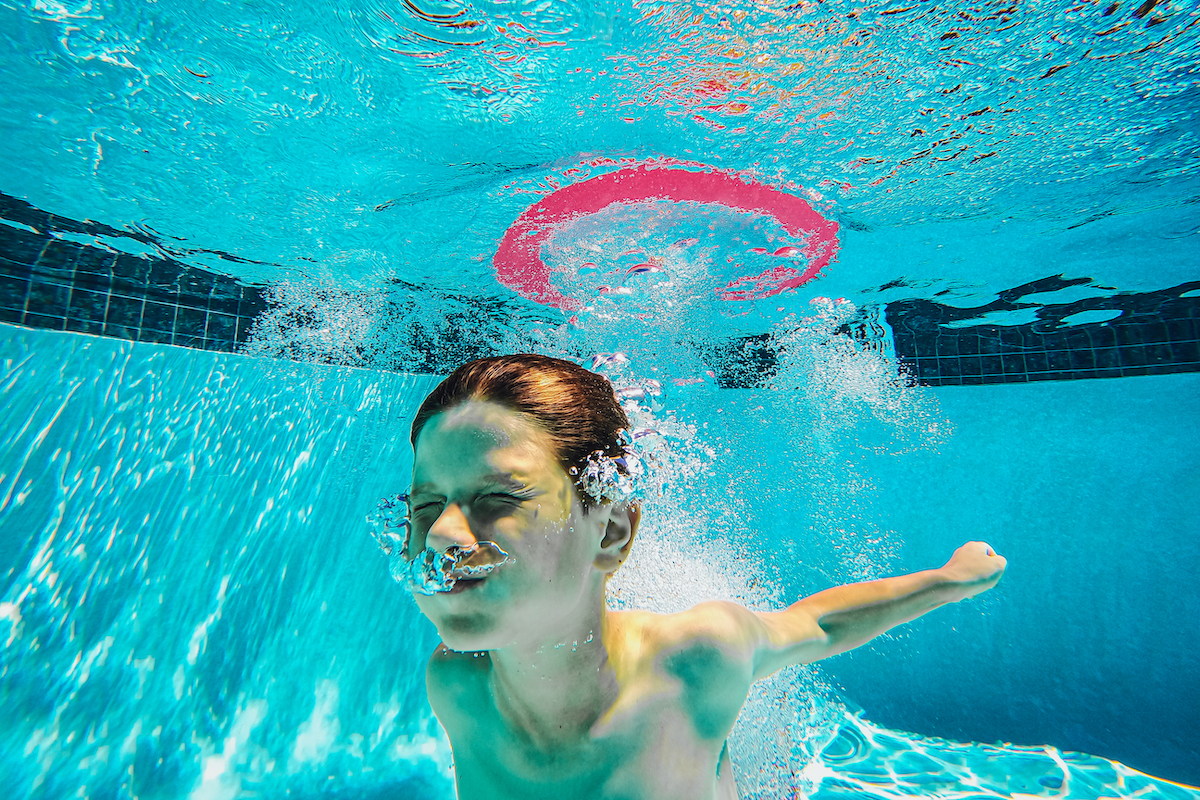The discomfort and pain caused by swimmer’s ear can surely dampen your summer vacation or a day at the pool. Despite the name, you may also be surprised to find out that water is just one of the ways you can develop swimmer’s ear.
Ear infections and swimmer’s ear are two common ear conditions that can cause discomfort and pain. Although they share some similarities, there are significant differences between the two.
Let’s “dive” in to learn more about the causes, symptoms, and treatments for swimmer’s ear, as well as how it differs from regular ear infections.
What Is Swimmer’s Ear?
Swimmer’s ear, also known as otitis externa, is a condition that occurs when the outer ear canal becomes inflamed or infected. This condition is most commonly caused by water becoming trapped in the ear canal, creating a moist environment that allows bacteria or fungus to grow.
Baths, showers, swimming, or moist environments can all contribute to increased moisture in the ear. When water is trapped in the ear canal, bacteria that normally inhabit the skin and ear canal multiply, causing infection of the ear canal.
While people of any age can get swimmer’s ear, it’s more common in children and young adults.
Ear Buds and Other Possible Causes of Swimmer’s Ear
You may be surprised to learn that using AirPods (or other earbuds) can leave your ear susceptible to infection by blocking the ear canal and allowing for moisture to build up. Earbuds or hearing aids that are dirty also increase your risk for infection.
Despite the name, other non-swimming factors that can contribute to swimmer’s ear include:
- Contact with excessive bacteria that may be present in hot tubs or polluted water.
- Excessive cleaning of the ear canal with cotton swabs or anything else that may remove helpful ear wax and allow bacteria in.
- Contact with certain chemicals such as hair spray or hair dye (avoid this by placing cotton balls in your ears when using these products).
- Damage to the skin of the ear canal following water irrigation or inserting cotton swabs to remove wax.
- A cut in the skin of the ear canal.
- Other skin conditions affecting the ear canal, such as eczema, seborrhea, or psoriasis.
Can Swimmer’s Ear Be Prevented?
There are steps you can take to reduce your chances of getting swimmer’s ear.
- Wear earplugs or a swim cap and dry your ears thoroughly with a towel after swimming or showering.
- Tilt your head to hold each ear facing down to allow water to escape the ear canal.
- Use a hair dryer on the lowest heat and fan setting to gently move air within the ear canal if you still have water in your ears.
- Avoid putting objects such as cotton swabs in the ear and do not try to remove ear wax. If your ear canal is blocked by earwax, consult your physician.
What is the Difference Between Swimmer’s Ear and an Ear Infection?
The main difference between swimmer’s ear and an ear infection is which part of the ear is affected. Swimmer’s ear affects the outer ear canal (in front of the eardrum), while ear infections affect the middle ear (behind the eardrum). Swimmer’s ear is typically caused by water becoming trapped in the ear canal, while ear infections are typically caused by a viral or bacterial infection.
Symptoms of swimmer’s ear and an ear infection can be similar, including pain, swelling, and drainage from the ear. However, swimmer’s ear is more likely to cause itching and redness in the ear canal, while ear infections are more likely to cause fever and reduced hearing. If you have pain when you tug on your outer ear it’s likely swimmer’s ear.
How Do You Treat Swimmer’s Ear?
Treatment for the early stages of swimmer’s ear includes careful cleaning of the ear canal and the use of eardrops that inhibit bacterial or fungal growth and reduce inflammation. Mildly acidic solutions containing boric or acetic acid are often effective for new infections.
Before using any drops in the ear, you should be sure you do not have a perforated eardrum. Check with an ear, nose, and throat specialist if you have ever had a perforated, punctured, or injured eardrum, or if you’ve had prior ear surgery including ear tubes.
If you’re a candidate for ear drops, you can make your own ear drops using rubbing alcohol or a mixture of half alcohol and half vinegar and apply them with a dropper. These ear drops will evaporate excess water and keep your ears dry.
For more severe infections, your doctor may prescribe antibiotics, steroids (for inflammation), or antifungal medications (for symptoms caused by fungus). If you have ear tubes, a non-ototoxic (does not damage your hearing) topical treatment should be used.
With the right treatment, most swimmer’s ear infections clear up in seven to 10 days. You may need to use over-the-counter pain medication until the infection subsides.
ENT Memphis: Your Source of Relief for All Ear, Nose, and Throat Disorders
You don’t have to suffer from pain caused by swimmer’s ear. If you suspect you’re suffering from an ear infection, make an appointment today. If your child is suffering from chronic ear infections, they may benefit from pressure-equalizing tubes.
Rande Lazar, MD, and the team of ear, nose, and throat specialists at ENT Memphis are experienced in diagnosing and treating both pediatric and adult patients.
With same-day appointments at convenient office locations in Memphis and Bartlett, we can get you started on the path to healing. Contact us today.




Comments are closed here.